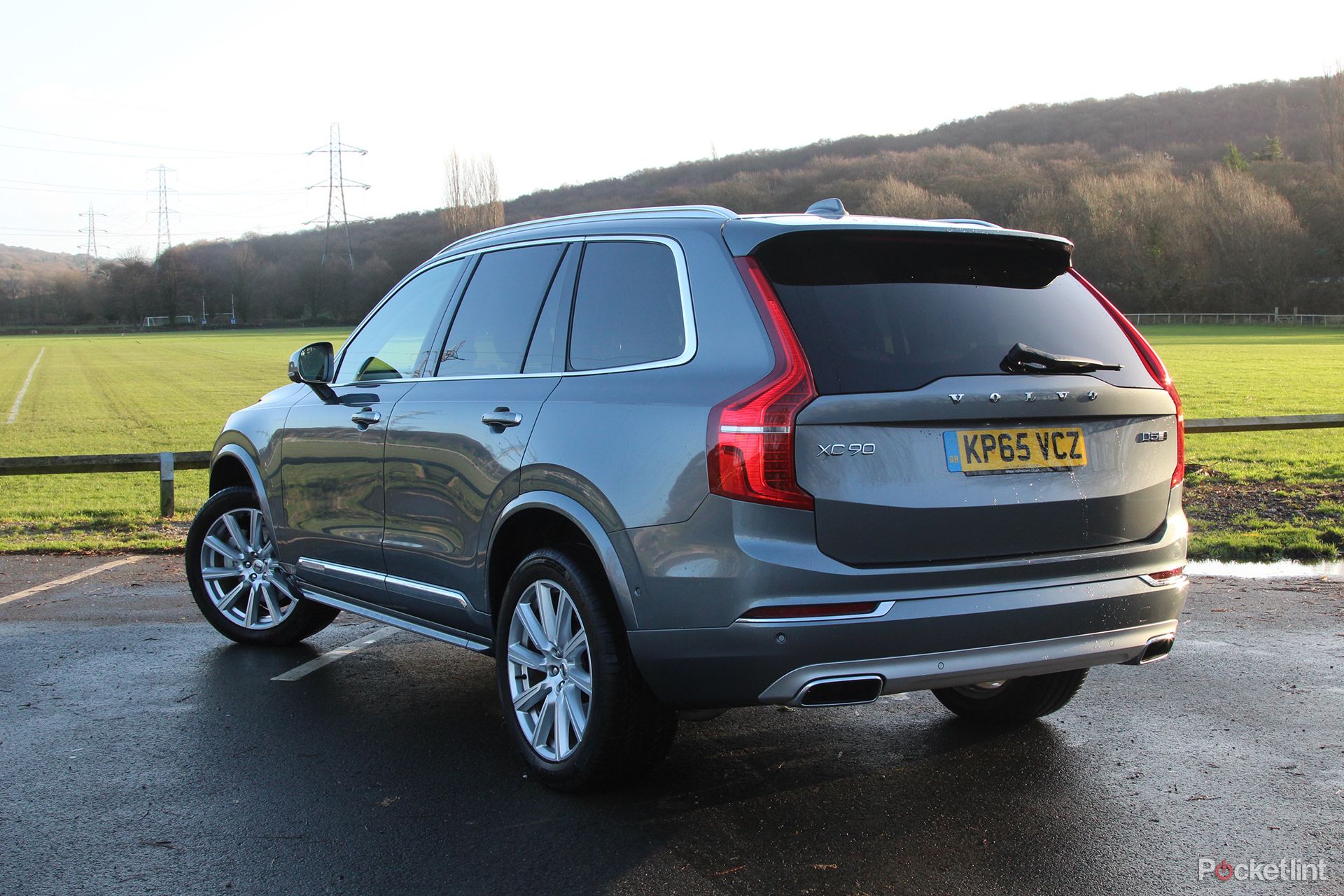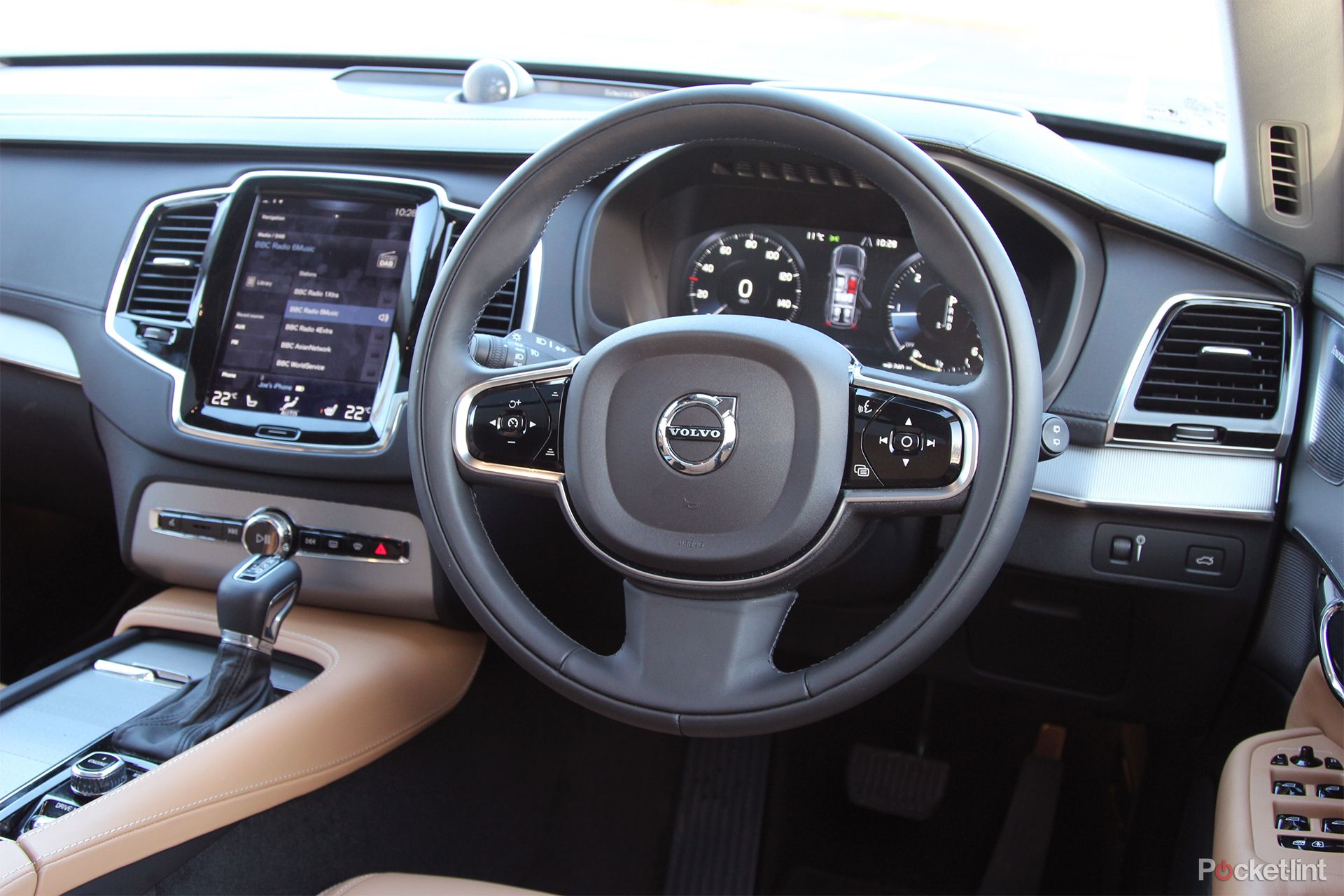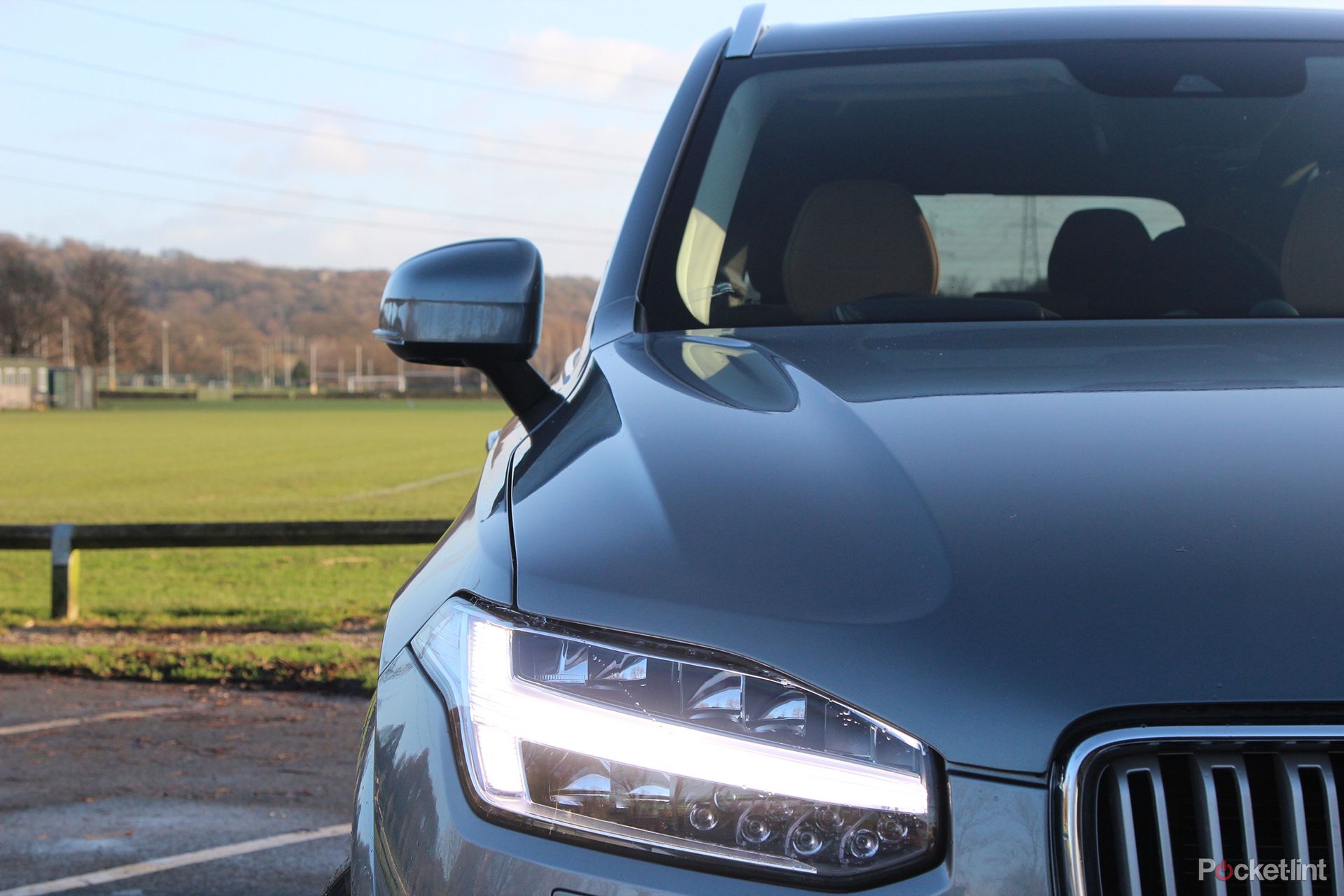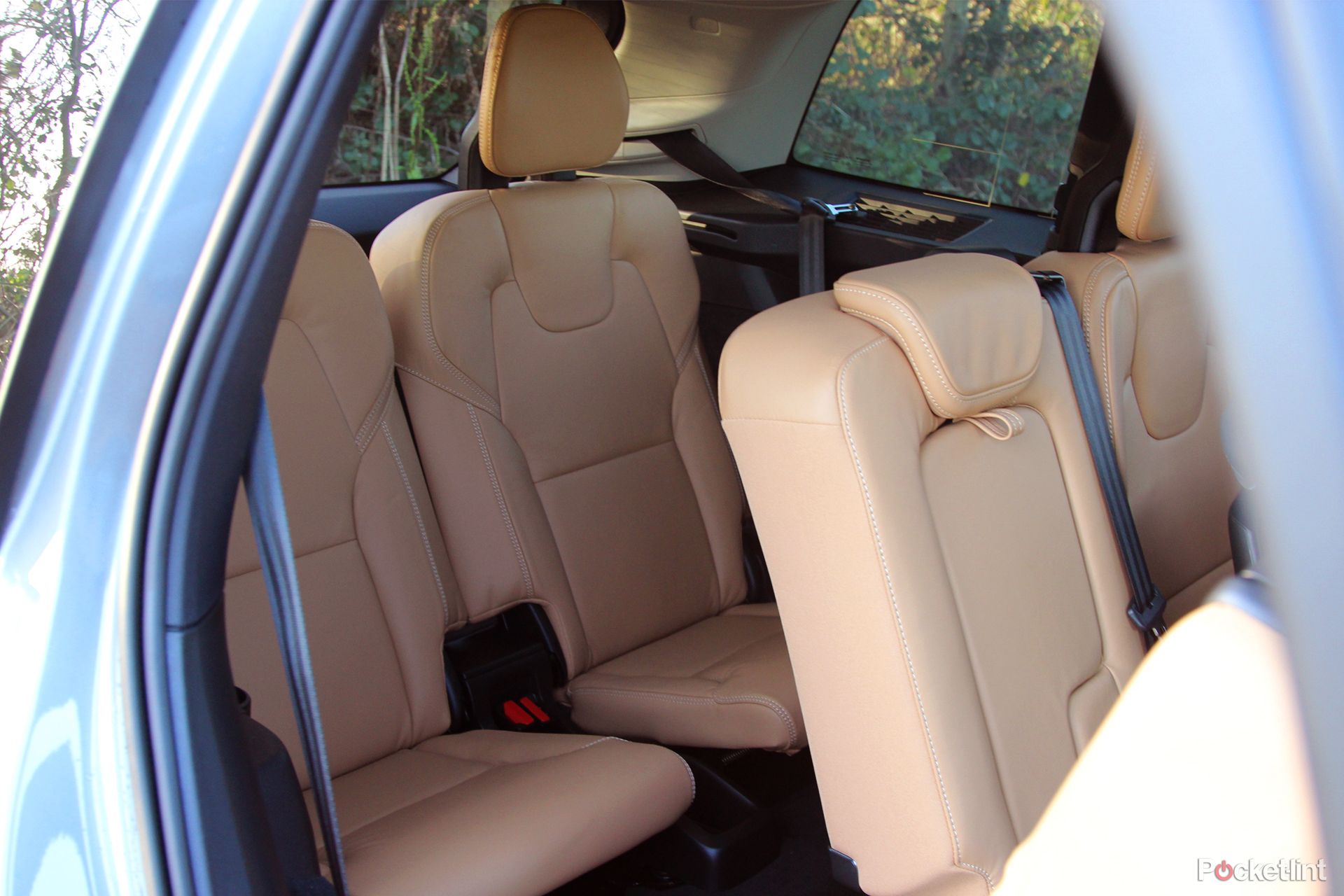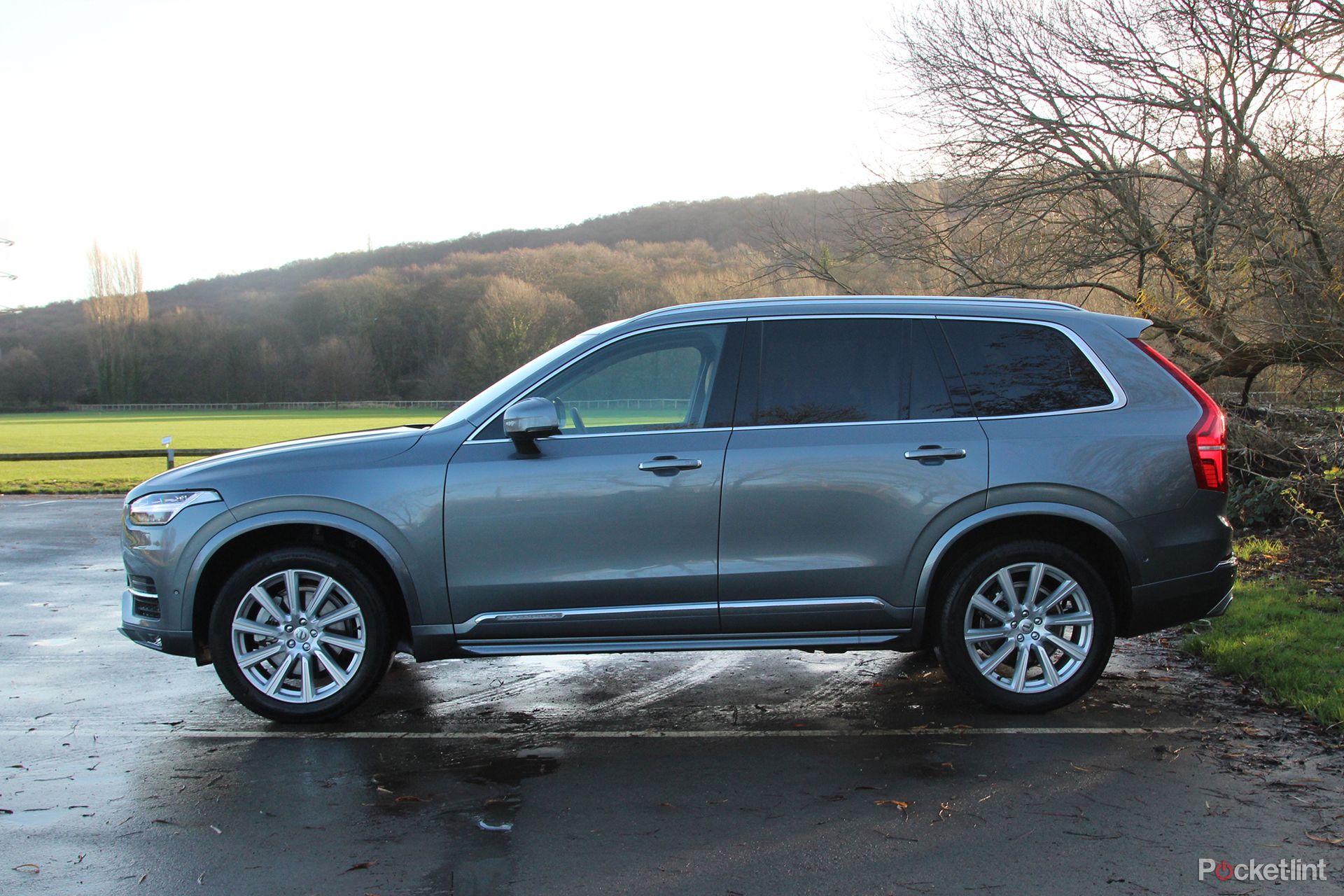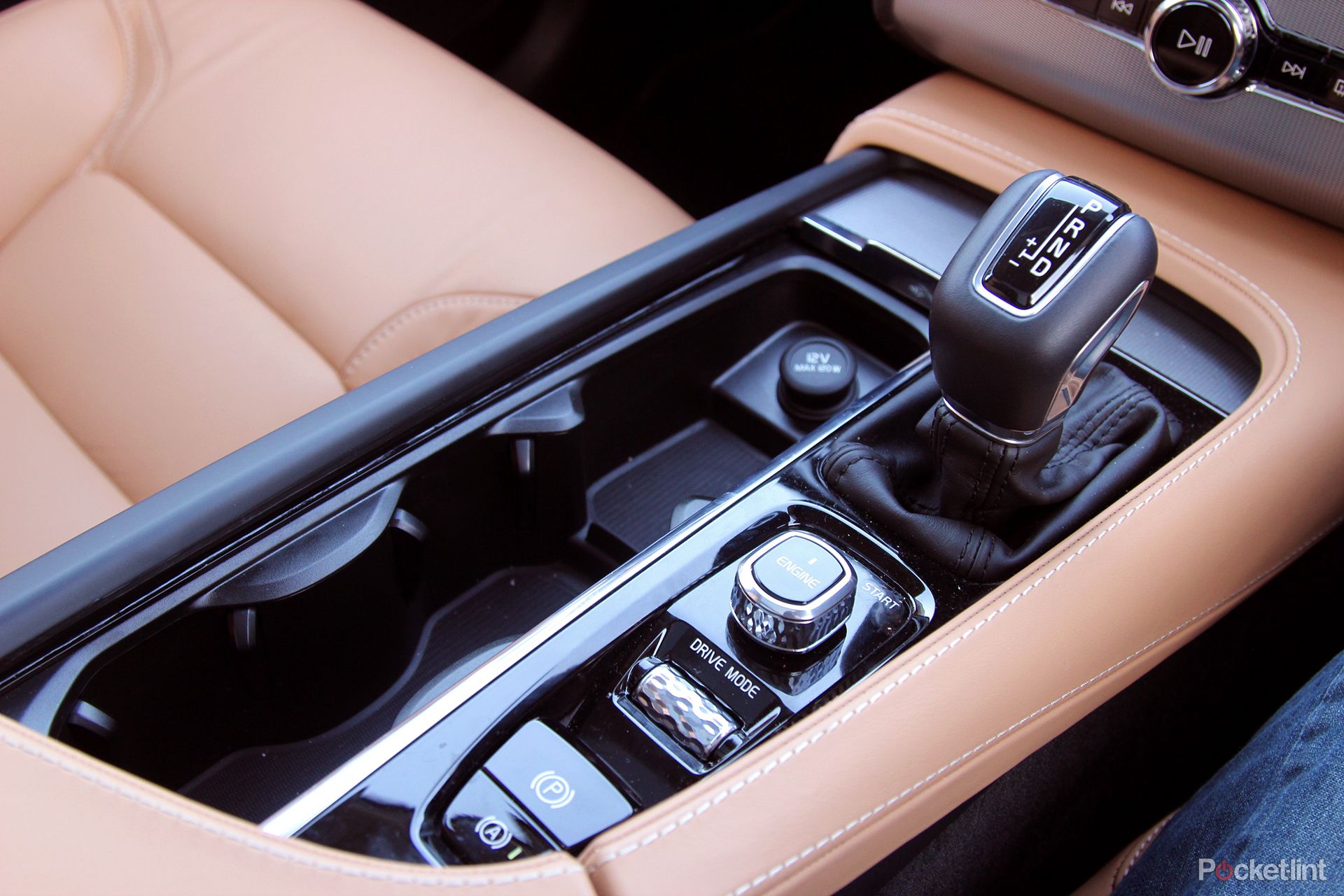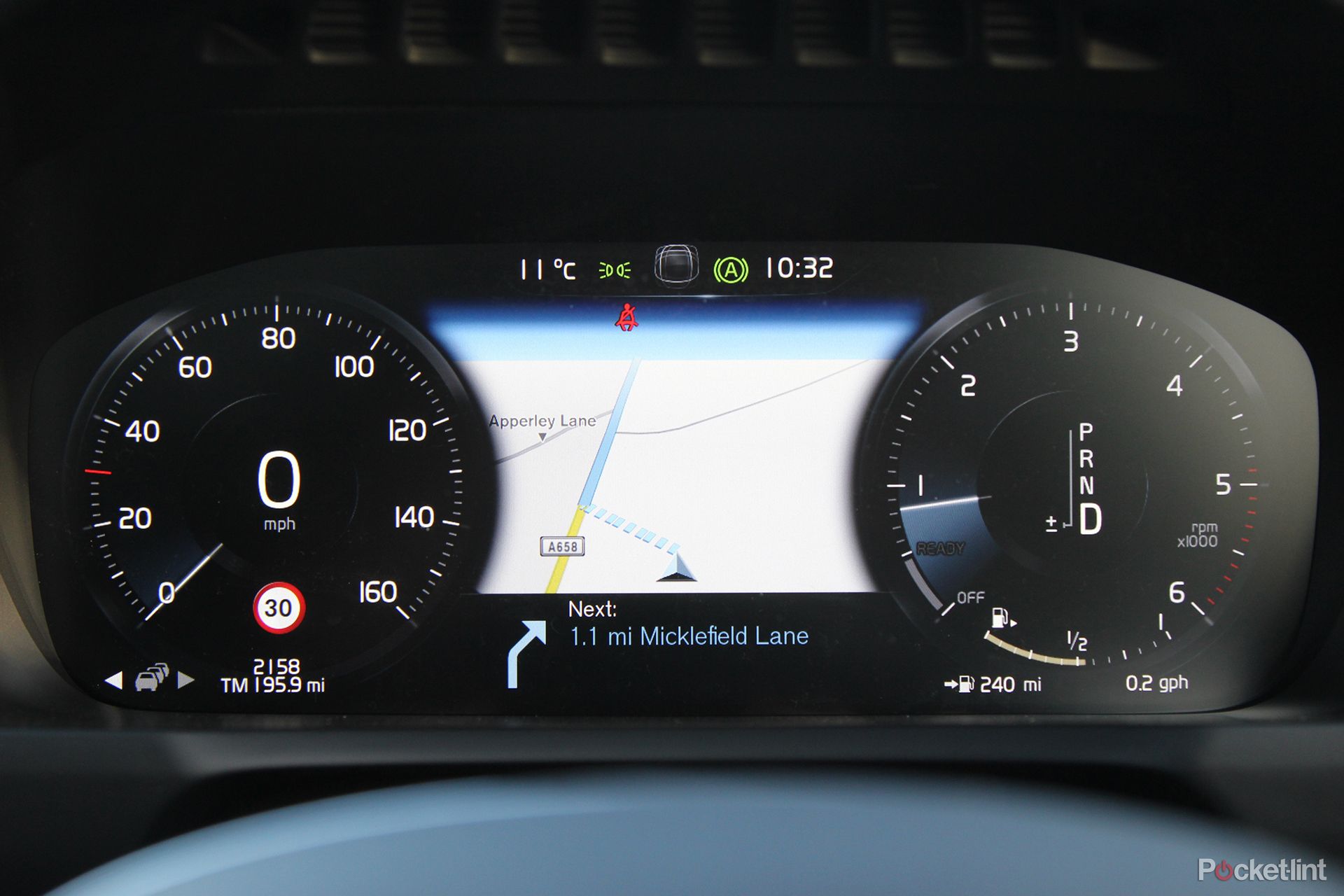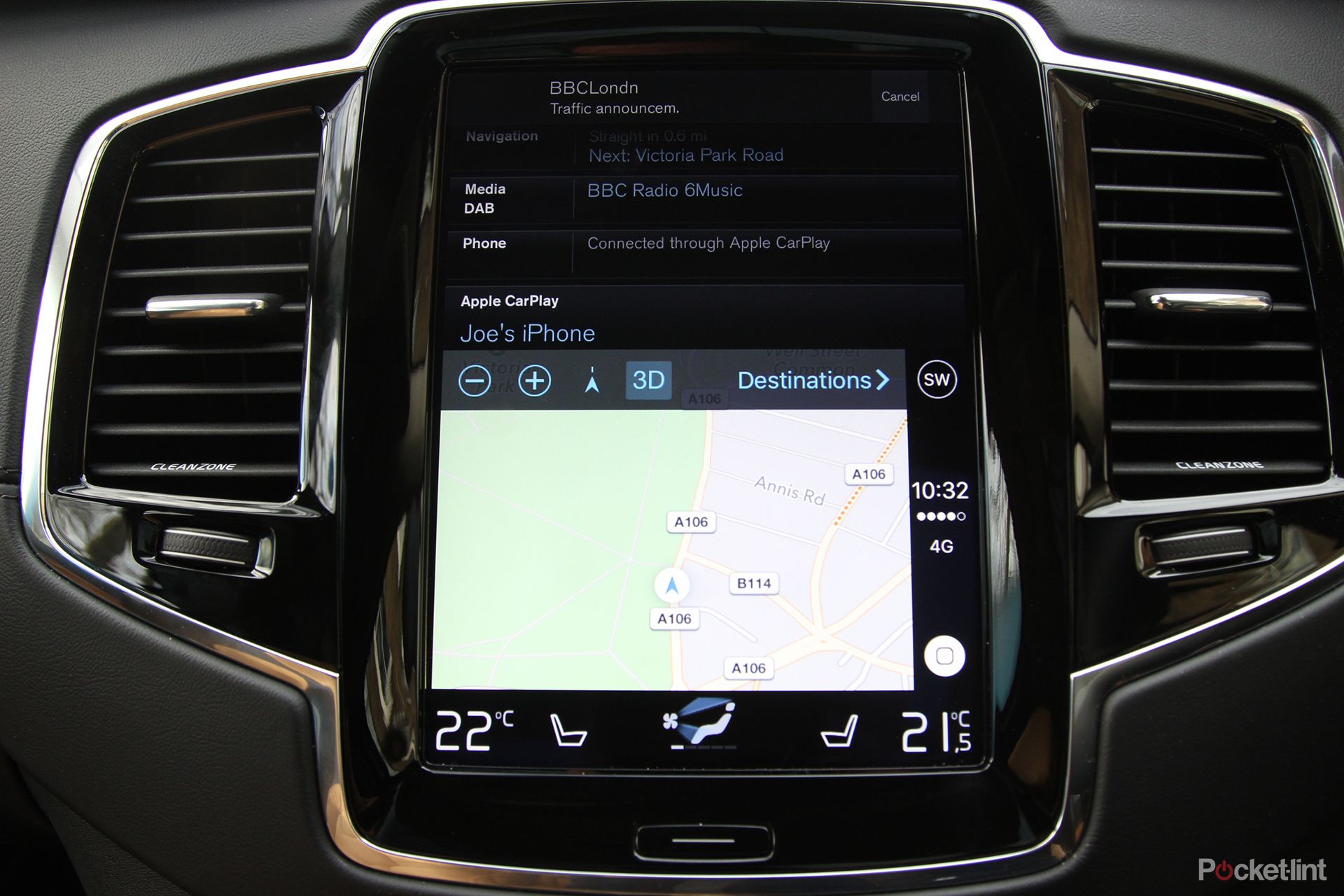In car terms, half a decade is a lifetime. So the last Volvo XC90's 12-year production run represents something of an unusual case. It sold well right to the end but was out-smarted by a new breed of big SUVs.
Our quick take
Volvo waited a long time to replace the XC90. The old car had a legion of fans, many of whom had owned more than one. When you replace such a loved design there's a risk that these loyal customers become alienated by changes, while those who have moved to other brands ignore you and never come back.
So Volvo had to nail the XC90 by pleasing its customers and attracting new ones. It's clearly confident, because the XC90 is boldly priced to match the premium German brands. But, with a couple of exceptions, that's entirely justified.
The engine doesn't feel strong enough in some situations, it won't entertain the loan driver like a BMW, and the Sensus interface and infotainment system still needs some work. Yet everything else about this car works so well, makes life so easy and is so relaxing that it's easy to forgive these small issues. It feels like a truly premium product.
Volvo has kept the qualities people love. The XC90 is confident but not aggressive in style. And it's better set-up for family life than any of the opposition. It prioritises comfort over sportiness. And if were going to have a serious car crash in any vehicle on sale today and hope to walk away, you'd be better off in this than just about anything else. It'll try quite hard to stop you having that accident in the first place, too.
But Volvos have long had these qualities. What's brilliant about the XC90 is it adds engineering underpinnings and on-board technologies that lead, rather than follow the pack. And it wraps the whole lot up in an interior and exterior package that is unique and distinct from the German brands' cold, Teutonic vision of what premium is. This is a warm, welcoming but still distinctly premium Swedish experience that's easy to love and just makes you feel better about life.
Twelve years was a long time to wait for a new XC90, but it's been worth the wait — because it now leads the class.
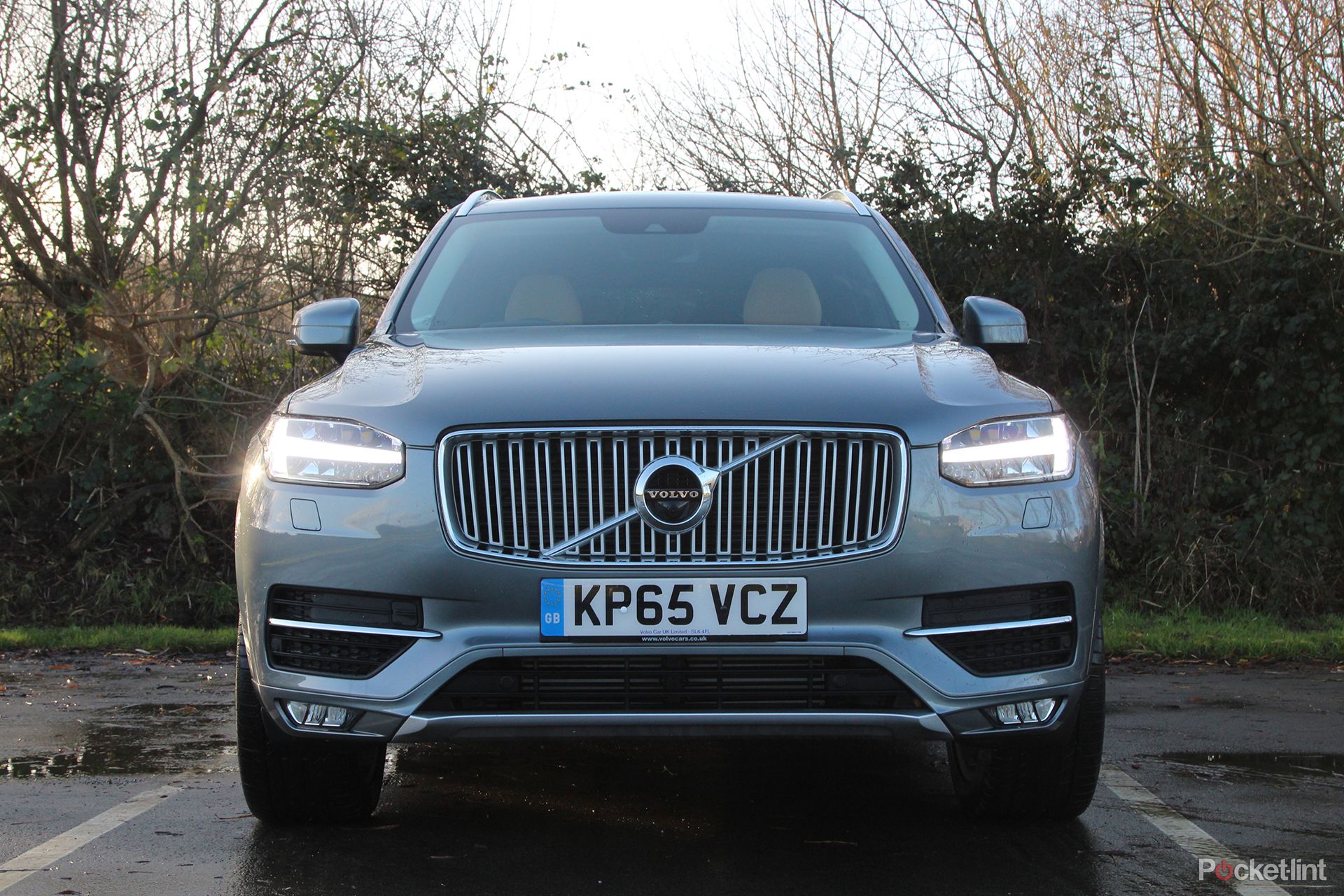
Volvo XC90 - 5.0 / 5
| FOR | AGAINST |
|---|---|
|
|
Enter the new XC90. The first production car to come from what, in effect is "new Volvo". Now under the ownership of Chinese Geely, the XC90 sits on Volvo's SPA platform — a new, front-wheel-drive architecture that will underpin all new Volvos from the S60 upwards.
Most importantly perhaps, it was designed under Thomas Ingenlath — a designer from the VW group who created some of Volkswagen's best-known recent concepts. Ingenlath knew Volvo needed to be more premium.
But he knew it couldn't be just like the Germans — a "me too" Audi wouldn't cut it. It had to be Swedish; it had to be different. And the XC90 is a master class is Scandinavian success. Here's why.
Volvo XC90 review: A safe Swede named Thor
One area that Volvo is never going to approach differently is safety. It's at the core of the company's approach. Volvo is a human brand — it wants to make your life better and look after your life, rather than make you drive like you want to end other people's lives.
To that end, Volvo plans to be one of the first on the road with so-called driverless cars. Indeed, it's going to test them in the UK from next year. And that autonomous push goes hand-in-hand with a commitment that, from 2020, no one should die or be seriously injured in a Volvo. All of which is a long way of saying that the XC90 is one of the safest cars on the road today (so says Euro NCap) and is also loaded with technological kit, which gives you a taste of the driverless experience.
The XC90 is able to use a combo of the radar cruise control, camera and its electric power steering system to accelerate, brake and steer itself in certain situations — namely city traffic jams and motorways. It ticks you off and asks you to take hold of the wheel if you don't touch it every 10 seconds or so, and its steering ability is limited. But for traffic jams — like on our daily commute — Volvo has created a car which, while not letting you sit in the back and read a book, can certainly take most of the load off. Our 8-mile suburb-to-city-centre drive saw us touching the pedals only six times on one occasion.
It is fallible, of course. It can't cope if the white lines on the road run out — it needs those to keep itself in a lane (a clue to perhaps some of the challenges to come for the driverless car in the future), but otherwise it works well. And Volvo's radar cruise control — which you can use independently of the car helping you steer — is better than anyone except what you'll find in a Tesla Mercedes.
Volvo XC90 review: German pricing
It's not just safety that Volvo's pushing though. To compete with the German brands, it needs to lead with technology. And that starts with the XC90's exterior design.
Those piercing lamps carry a new brand signature. "Thor's hammer" the design team call them, riffing off the Swedish culture. The lamps (on our test car) use the most advanced technology available — a matrix LED beam array that works incredibly — lighting-up dark roads like daylight but then seamlessly adjusting the beam pattern to block out chunks as they sense oncoming drivers.
The equipment packs are another area Volvo has notably learned from the Germans — in that it's easy to rack-up the price, and there are lots of tempting options boxes to tick.
Notably, if equipped with the £2,000 "Xenium pack" the XC90 also features a 360-degree park view system, can park itself parallel or 90-degrees into bays, and features a panoramic roof. Another £3,000 buys you an amazing 18-speaker upgraded Bowers & Wilkins system, plus the winter pack and head-up display (HUD) bundled is £950.
Our car also featured the family pack (£275), consisting of integrated booster seat, rear door locks, luggage net; blind spot and rear collision mitigation (£500); and Apple CarPlay (a steep extra at £300). Most of these features work very well and improve the car's day-to-day usability. But you can see that, with these — and the other options packs available — it's easy for the XC90 to get very pricey.
Volvo XC90 review: A Swedish luxe lounge
Regardless of the options you add on, in this D5 Inscription trim the soft nappa leather and lovely wood or metal trim is standard. Prepare to bask in an extremely Swedish, high quality interior. No surprise as Robin Page, Volvo's chief interior designer, used to work at Bentley. And it does feel like a Swedish Bentley in here — there's even crystal glass on the gearshifter in some versions.
It's like a Swedish loft inside, augmented by the huge aluminium speaker baffles in the doors, behind which you can just see peeking through a serious arsenal of Bowers & Wilkins woofers with their trademark yellow cones. Never mind the look, it all sounds and smells so good.
The seats themselves of course are supremely comfortable too. Some Volvo hallmarks still remain. But these units are thin and lightweight which saves on space.
The best news though — particularly for those who fondly took to the previous XC90 for its family-friendly arrangement — is that in the cabin you can fit in seven full size adults with ease. And there's space for them to bring bags too. In that regard, it's much better than a BMW X5 or Audi Q7.
Access to the third row in the XC90 is easy, even for adults. Dropping the seats and flipping them back up takes mere moments too, and there's a flip-up board in the boot with a bungee strap attached to stop your shopping or loose items falling over.
All the while, little Swedish flags on the leather edges remind you just which country this stylish space was created in. There's an array of USB ports too, and full, 3-pin plug power point (a £100 option) in the back.
Previous generation XC90 owners might miss the Range Rover-like split-functioning boot, with a pop-up top glass section and fold down lower. But we guess Volvo had to save money somewhere.
Volvo XC90 review: In the driver's seat
It is perhaps reflective of the high-tech content, auto-pilot tech and lounge interior that this car is better to ride and simply sit in than it is to drive. The XC90 is, of course, four-wheel drive — but this is fundamentally a front wheel drive architecture, which dynamically puts it at a disadvantage to cars like the rear-drive biased BMW X5. The XC90 can pitch about a little if you throw it around and you're never really going to have amazing fun driving a huge SUV. Generally it's very calm and relaxing and on 20-inch wheels it rides nicely.
The bigger issue concerns the engine. Our D5-badged car might trick you into thinking it's one of Volvo's unusual 5-cylinder diesels, but this is a new 4-cylinder diesel engine which makes 235bhp. Problem is, the XC90 is a fairly massive car. Throw seven, or even five chunky adults in and the car only just feels fast enough in some situations. As in, we couldn't out-accelerate a Fiesta up a slip-road just fast enough. It sounds guttural when you work it too.
For most uses it will be fine though. Over 400-miles in a mix of traffic types it returned 30mpg. And the power/noise is only really a problem when compared to the overly-endowed 3.0, twin-turbo diesel Audi Q7s and BMW X5s some customers may be used to.
If that's you, potentially check out Volvo's intriguing T8 hybrid engine option instead — a plug-in hybrid which offers 20-miles or so of full electric range, but 320bhp from a petrol engine and 87bph from an electric motor combines to move that XC90 about with some alacrity (and saves you a bundle in tax potentially, too).
Volvo XC90 review: A new Sensus
Volvo also introduced its new infotainment system in the XC90. Based on a new electrical architecture, in the XC90 this means you get a 9-inch, portrait format centre touchscreen and a 12-inch digital cluster display. Our car augmented this with the optional head-up display (HUD) that projects in the windscreen. Considered as a whole, while this system is a big step forward for Volvo and has some nice features, it isn't quite the in-car user interface nirvana we were expecting.
The gauge cluster presents a pair of digitised, traditional Volvo speed/revs gauges. These — in some circumstances — shrink in size slightly. But the whole screen display can't be reformatted, like Audi's virtual cockpit can, to let the map take over. In fact, the resolution quality is clearly worse than the centre screen and the colour palette is a bit old fashioned and limited. It feels like a wasted opportunity to have a digital display here and only do this much with it. What we did like were steering wheel control buttons which have a digital feel and allow you to pull-up menus to select previous navigation destinations and more.
The main centre screen interface is a mixed bag. Volvo's using Infrared touch technology (not capacitive or resistive screens) which means the interface will handle multitouch inputs, swipe and pinch-to-zoom even when you've got gloves on. It's fast, too. Not iPad fast, but fast for car fast — showing Volvo has spent money on decent processors.
It's mostly easy to use, too. The home screen presents four tiles — navigation, media/radio, phone and a reconfigurable one for the last app / function you used (such as Apple CarPlay). Tap on a tile and it expands, taking over two-thirds of the screen and shrinking the others down. When you're in an application like navigation, you can set it to take over the full screen.
All of which is fine — expect for the fact that it looks rather like a wireframe design that hasn't had any graphics designed for it. As you delve into menus, such as when setting a navigation destination, the structure and grid layout changes, buttons and colours start to take on random locations and attributes. The resolution is high, and it's easy to jump around menus, while the constant presence of the climate controls at the screen's base make the presence of no physical controls liveable.
What's frustrating is that it feels about 15 per cent away from being great; as the best in-car touchscreen system yet. But its flaws irked us repeatedly. Ultimately we concluded that the BMW iDrive / Audi MMI setup — while having a higher barrier to entry and steeper learning curve — is better to live with over time.
To recap
Volvo waited 12 years to replace the XC90 but the new car is packed full of safety equipment (as you’d expect) and leading technology you might not. It’s a brilliant family car, a lovely space to sit in and does precious little badly. It has that special Pocket-Lint star quality of simply making your life better.

